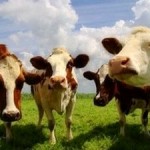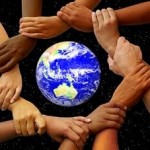The data presented in this paper reveal a major awareness gap about livestock’s contribution to climate change.
- Compared with other sectors, recognition of the livestock sector as a significant contributor to climate change is markedly low.
- Consumers with a higher level of awareness were more likely to indicate willingness to reduce their meat and dairy consumption for climate objectives. Closing the awareness gap is therefore likely to be an important precondition for behaviour change.
- Those actors most trusted to inform consumers on the links between livestock and climate change are generally ‘experts’ and environmental groups, though important differences exist between countries.
Climate change is not currently a primary consideration in food choices.
- Climate change is generally secondary to immediate considerations of taste, price, health and food safety in shaping food choices.
- This has important implications for the design of strategies to moderate meat and dairy consumption: those that emphasize co-benefits (e.g., for health and expenditure) and do not require consumers to compromise on enjoyment are likely to be more successful.
Some of the greatest potential for behaviour change appears to lie in emerging economies.
- Respondents to the online survey in Brazil, China and India demonstrated high levels of acceptance of anthropogenic climate change, greater consideration of climate change when choosing meat and dairy, and a greater willingness to modify their consumption behaviour than the average of the countries assessed.
- This is encouraging as these countries are among the most important for future demand for meat and dairy products.
Click here to read/download the Full Report – “Livestock – Climate Change’s Forgotten Sector: Global Public Opinion on Meat and Dairy Consumption”.
Source: Chatham House.
About the Survey
The survey is part of a project being undertaken in conjunction with the Glasgow Media Group, focusing on public awareness and understanding on livestock and climate change in China, Brazil, the UK and the US. The project’s findings are expected to be published mid-2015, and are funded by the Avatar Alliance Foundation, Susan and Craig McCaw Foundation, and Heidi Bassett Blair and Chris Blair.
The current survey has been conducted in 12 countries in total: Brazil, China, France, Germany, India, Italy, Japan, Poland, Russia, South Africa, the UK and the US via a mixture between Ipsos internal online panels and external suppliers, as follows:
- The surveys in Brazil, France, Germany, Italy, Poland, Russia, the UK and the US were conducted via Ipsos Interactive Services online panels
- The surveys in China, India, Japan and South Africa were conducted via external suppliers
They surveyed just over 1,000 adults in each country between 26 September and 10 October (see below). The age range of the sample surveyed in each nation varied depending on levels of internet penetration, but in all cases, the sample consisted of adults between the ages of 18 and 65.
The use of online panellists means that in some cases the respondents are likely to be representative of more affluent, connected populations. Data has, though, been weighted to the known national populations. The data has been weighted by age and gender in all countries; in addition to these, it has also been weighted by region in Brazil, France, Germany, Italy, Poland, Russia, the UK and the US.
At the aggregate level, each country has been given equal weight regardless of population size relative to others – meaning that Russia’s 1,000 responses count for the same as Poland’s 1000 despite its population being considerably larger.
As with all surveys, the findings are estimates, and subject to sampling tolerances.
The survey questions were asked in English in India, South Africa, the UK and the US – slight linguistic adaptations were made to each country. The survey questions were translated from English into the main languages used in non-English speaking countries – all translations were verified by an independent translation agency.
For the purposes of analysis, they have grouped countries into categories, as follows:
- BRIC: Brazil, Russia, India, China
- EU: France, Germany, Italy, Poland, the UK














